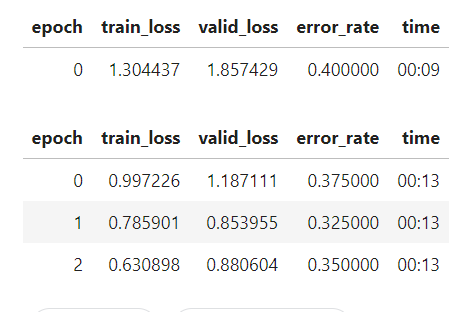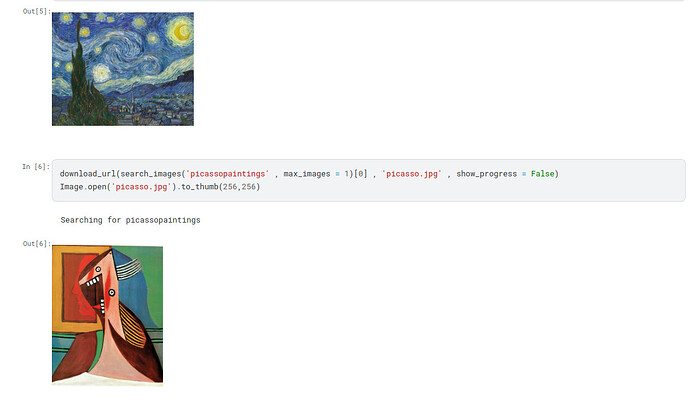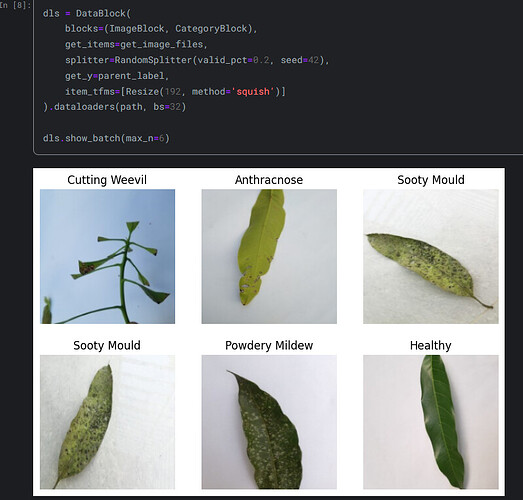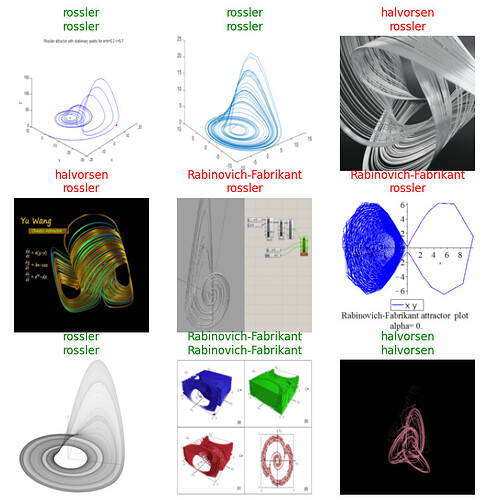I also tried with this kaggle dataset to identify the type of tomatoes. It works quite well.
Pre-trained models makes wonders! ![]()
Dataset - Tomatoes Dataset | Kaggle
Notebook - Tomatoes classification using FastAI library | Kaggle
Here is my homework 1 that classifies Picasso and Van gogh paintings.
Explanation of the notebook
This notebook is designed to help you understand the function definitions used in the fastai Chapter 1 homework. While classifying different styles of paintings can be complex and typically involves various loss functions and advanced methods, this notebook takes a more approachable and fun route. We’ll be focusing on a simple classification task: determining whether a painting is by Picasso or Van Gogh. This not only makes the learning process engaging but also provides a practical example of how to apply these concepts.
I finished reading chapter 01. I tried the code to classify facial expressions with IMFDB dataset. At the moment I error_rate is high. As I learn more I’ll update it. Sharing my kaggle notebook here. Thank you!
Hey mate,
Congrats. I tried to look at your work but could not find the code.
Would love to take a look.
Hey Craig, thanks a lot for your message and kind words. Earlier I copied the public link without saving it as public. Now I re-did it. I checked from a different browser where I am not signed on kaggle and it seems to be working. You’ll be able to check it now. Would love to hear any thoughts.
After going through chapter 2, I was able to set up a space for bear, dog, owl and ferret classifier. I tried to add explainibility to the model using captum but its not as good as I hoped it to be
link to the space : Bear Not Bear - a Hugging Face Space by vinayp27
It would be great to see this in action. But your links don’t work.
It should work now. I have changed the visibility of space to public
Everything you wanted to know about evaluating an LLM - not exactly based on Fast AI experience, but I hope you all will appreciate it. Let me know what you think!
Thanks for sharing I learnt something new.
Hello everyone. After Chapter 1 I used the same architecture to build a mango disease classifer based on mango leaf images.
The dataset is from: Mango🥭 Leaf🍃🍂 Disease Dataset | Kaggle.
Hi everyone! I created a Chaotic attractor predictor! I come from math background and I struggled categorizing the name of attractor so I created this predictor to aid me in my endeavors
https://www.kaggle.com/code/justinasvykas/fastai-l1-ex1-chaotic-attractor-predictor
Although this model does not perform as well as I wanted:( about 50% error rate. I believe this is due to the data quality being poor. The data was gathered with a google crawler, but there is little images of specific attractors. I think one of the ways this model can be improved is by creating my own images of attractors using equations with different parameters and using that instead of crawled images.
have a great day and thank you for your posts! You inspire me!
Dear Heitorfr, sorry for the late reply. Wasn’t expecting any traction. Aah yeah the kaggle notebook wasn’t public I see. However kaggle has a lot of trouble with pytorch geometric and loading in the MUTAG datastet
I uploaded the notebook to github here, hope this works:
I’m really excited to share the work I’ve been doing, all thanks to this incredible course!
Since I work in the eCommerce space, I wanted to tackle an image classification problem that addresses a real-world challenge in this field. In eCommerce and retail, it’s often hard to predict if a product will become a bestseller. Product designers rely on experience and intuition to create designs, but they have to wait and see if customers actually love the product. That’s where machine learning can step in!
By fine-tuning a ResNet18 model with just 200 images, I’ve developed a floral bestseller classifier that currently achieves 65% accuracy. It’s a solid start for my first iteration, though there’s definitely room for improvement. I didn’t use data augmentation because image quality itself can play a role in whether a product becomes a bestseller. As a result, I believe improving the model will require more data rather than relying on augmentation alone.

The best part? This is my very first machine learning project, and I already have it in production on Hugging Face Spaces using Gradio—just within two days!
Really Interesting work !!
How do we know its a best seller or not ? (with the help of our model & training)
- What patterns you found - which differentiates best sellers and non-best sellers ?
- Does the data of best sellers contains flowers of a specific area or maybe Its just all the data on your ecommerce website sales ?
Thanks for the questions!
I defined bestsellers as products that achieved the highest volume of sales.
- That’s a really good question, and it’s something I’m still trying to figure out. I’m hoping this course will provide more insight into how the model actually distinguishes between bestsellers and non-bestsellers. If anyone has suggestions, I’d love to hear them! How can I better understand the factors my model is using to make these predictions?
- For now, I used a random selection of floral products from a few eCommerce links.
At the end of the day, predicting bestsellers based on images alone is pretty challenging, as image quality is just one piece of the puzzle. Other key factors, like price and how visible the product is on the site, also play a big role. I’m not sure yet how to build a more complex model that takes all these aspects into account, so any ideas or guidance would be really appreciated!






